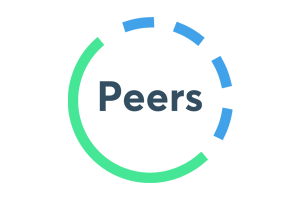9 recruiting tips for start-ups and scale-ups.
9 recruiting tips for start-ups and scale-ups.
How do you find, hire and retain developers?
“If you want to build a product that connects with the world, you need to have a diverse team,” explains Shahul Hameed, CTO of Peers at the CTO Summit in Antwerp. How does he recruit and retain great developers?
Shahul Hameed's scale-up Peers is not a test case. Previously, this fast-thinking and fast-talking programmer helped develop the Indian learning platform Entri. Entri is still changing lives today. “The platform also helps students from remote locations to study and pass entrance exams for medical or engineering studies,” says Shahul. “Recently, I heard how Entri had changed the life of an ordinary girl from a remote village. She had taken online classes and scored high marks on her entrance exam. Today, she's a doctor.”
At the CTO Summit, Shahul advised his fellow CTOs on recruiting and retaining talent. These are two major challenges for every start-up and scale-up. The battle for the best programmers is extremely competitive. “You can't compete with the salary offering of big software companies,” Shahul says. “But that doesn't mean you can't attract great profiles. And the better you recruit, the easier it is to retain them afterwards.”

His 9 tips to build a strong and diverse development team?
Tip 1. Recruit with your mission in mind
In your job ads, provide information that others don't and that will interest developers. Talk about your mission, for example. This appeals to candidates' emotions and dreams.
“Programmers find it inspiring to build solutions that will make the world a better place. It can be a reason to choose a small, lower-paying start-up or scale-up rather than Amazon or Google.”
Talk about the technology you work with. This may also appeal to developers as they all have their technical preferences.
Tip 2. Use your star performers
People want to work for people. Shahul therefore recommends showing who your people are. “Let applicants know who they'll be working with. Maybe you have some amazing programmers others look up to. Being able to say during the job interview that the candidate will work with this or that amazing programmer may be all it takes to convince an applicant. As a junior, you want to work with the best. Talk about your people so personal relationships can already develop during the application process.”
Tip 3. Target not just men
“Often IT job ads are aimed at the typical white, male programmer/engineer,” Shahul says. “Without realising it, we all use language that is subtly gender-coded. By doing so, you're excluding other, large target groups that could be a great addition to your team: women and talents from elsewhere in the world. Target them too by avoiding overly Western and overly masculine terminology.”
To fine-tune ads to ensure they also appeal to all genders, Shahul uses the Gender Decoder from katmatfield.com.
Tip 4. Discuss career goals
Describe the position clearly: what will the candidate do and with whom. And interviews can go beyond a description of the position that needs to be filled. “Discuss where they see themselves in three, six and nine months,” advises Shahul. “You'll find out more about the candidate's ambitions and you can clarify that you also see an ambitious path for them. Underline the growth that is possible in a fast-growing organisation. Then provide regular evaluations by a person other than the immediate superior.”
Tip 5. Be diverse by nature
Bias is a known problem in software and artificial intelligence, to the detriment of minority groups and women. The white man is still too often the reference. You reduce the risk of these biases if you work with a diverse team from the start.
“The world is diverse, your team should be too,” says Shahul. An Indian in Germany, he leads a team of six people, which includes IT professionals from South Africa, Spain, Italy, the UK and Germany.
Tip 6. Measure and improve
“Build and treat your recruitment process like a sales funnel,” Shahul advises. “Measure every step. For example: How many candidates have registered? What is their gender and background? How did they find you? Internal referral, your website, a recruitment agency, etc.? How many make it to the second round? And so on. These insights show where you're making mistakes and which talents you're missing out on. With this information you can improve your recruitment process.”
Shahul uses metaview.ai to improve his interview process. “It records my interviews and gives advice on how to improve without having to spend more time on it.”
Tip 7. Use experienced mentors
Discovering a new company is difficult and takes time. “Make this easier and speed it up through mentorship. Have an experienced developer mentor the newcomer. This experienced employee will feel appreciated and the newcomer will feel welcome."
Tip 8. Allow your people to grow
Give your people reading material and training to grow. “Encourage them to share their knowledge in the team through conversations, writing blogs, sharing learnings on Slack, etc. People rarely leave a company when they see themselves evolving.”
Tip 9. Make your process scalable
“Just as your product and organisation must be scalable to deal with, and facilitate, the rapid growth of your business, your recruitment and onboarding process must also be growth-proof. Take this into account already when designing the HR process," concludes Shahul.
We wish you every success with your strong and diverse team.
If you’re a Europe-based B2B SaaS company looking for advice and potential investment, we can help. Get in touch, and let’s get the conversation started.
